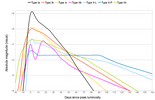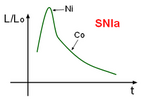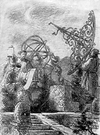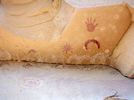Cruiseraurora
Padawan Learner
Cass says the supernova should be visualized.
Thus, its flare has already made its way to Earth. They also claim that the impact is initially weak, with changes occurring at the genetic level. People with special abilities are born, their gene memory, deep knowledge is activated. These are outstanding people who influence society, change the paradigm.
Known supernovae outbreaks were recorded in the 2nd century, in the 4th, 11th, 12th, 16th. They leave behind nebulae. But they are at a great distance. for example, the supernova outbreak of 1006 is noted in many European documents. Astrologers' predictions of war and famine associated with it have been preserved.
The closest flares to your events:
CH 1181 Cassiopeia 0 7100.
CH 1572 Cassiopeia -4.0 8000.
Scientists estimate the total number of supernovae in the Milky Way to be between 2 and 12 per century, although none have actually been observed for several centuries.
Evidence of relatively close supernovae outbursts include the supernova remnant in Sails (about 800 light-years away, 12,000 years ago) and Geminga (about 550 light-years away, 300,000 years ago).
We might be interested in a flare specifically from the constellation Orion.
Rigel is indeed called "leg" in Arabic.
The winds of Rigel create supernovae. Supernovae are also born in the Sword of Orion asterism.
If you are looking at 16th century events, there should be mention of such an outbreak at that time. If scientists have not found evidence of such a hypothetical supernova at this time, then you have to look for a mention in medieval literature.
Since the nearest flare to the period you are considering was too far away, I don't see any connection.
And that's my personal opinion, if I may say so. This plot is fascinating, but not all that important. You yourself noticed that the background was apparent a hundred years earlier and two hundred years earlier. So these events are legitimate, it's not a revolution, it's a special case. It's rare for a king to gain power without killing his relatives. Of much more interest here is Shakespeare's play Richard III. It's a coded message, just like Poussin's paintings. Richard is only a prototype, a symbol. Did the Rosicrucians and including Shakespeare, who was close to the crown, not know what really happened to the children? Obviously it doesn't matter, in the play they are killed. The attention here is drawn to something else. There is a real diamond to be discovered here.
The usurpation of the royal lines can be looked for much earlier. Much! Mary Stuart was also a Tudor. And completely inconsistent with the "purpose of royal lines". (There should be a big study here as to what the purpose of royal lines is. And what it means to have a "legitimate" heir. In our sessions we got a clue - "peas". Detect. We researched this question. I think it would also help you to understand the laws of succession. They are the ones that have been distorted. Also, you left out the kites and coats of arms to understand the genetic passport of the blood lines and their purpose. Coat of arms - "erbe" - heritage. On the coat of arms were applied symbols, motto. But the motto was not text, they were symbols, a code. As there is a similar code in Poussin's painting Shepherds).
The Plantagenets also usurped power. And we can retrospectively go back to when priestly blood lines became royal (with the involvement of knights).
My "instincts" take me back to the 8th century to the Pyrenees. It's very subjective because that's my genetic memory and my lineage and my destiny. It was during that period that events occurred to which my body reacts with pain to this day. Cass said "instincts" not "intuition" in this case for a reason. Instincts are connected to the body, and the activation of ancestral memory happens on a genetic level. I haven't found any information about a supernova outbreak in the 7th or 8th century, but I know it happened.
(This is just my personal opinion)
Thus, its flare has already made its way to Earth. They also claim that the impact is initially weak, with changes occurring at the genetic level. People with special abilities are born, their gene memory, deep knowledge is activated. These are outstanding people who influence society, change the paradigm.
Known supernovae outbreaks were recorded in the 2nd century, in the 4th, 11th, 12th, 16th. They leave behind nebulae. But they are at a great distance. for example, the supernova outbreak of 1006 is noted in many European documents. Astrologers' predictions of war and famine associated with it have been preserved.
The closest flares to your events:
CH 1181 Cassiopeia 0 7100.
CH 1572 Cassiopeia -4.0 8000.
Scientists estimate the total number of supernovae in the Milky Way to be between 2 and 12 per century, although none have actually been observed for several centuries.
Evidence of relatively close supernovae outbursts include the supernova remnant in Sails (about 800 light-years away, 12,000 years ago) and Geminga (about 550 light-years away, 300,000 years ago).
We might be interested in a flare specifically from the constellation Orion.
Rigel is indeed called "leg" in Arabic.
The winds of Rigel create supernovae. Supernovae are also born in the Sword of Orion asterism.
If you are looking at 16th century events, there should be mention of such an outbreak at that time. If scientists have not found evidence of such a hypothetical supernova at this time, then you have to look for a mention in medieval literature.
Since the nearest flare to the period you are considering was too far away, I don't see any connection.
And that's my personal opinion, if I may say so. This plot is fascinating, but not all that important. You yourself noticed that the background was apparent a hundred years earlier and two hundred years earlier. So these events are legitimate, it's not a revolution, it's a special case. It's rare for a king to gain power without killing his relatives. Of much more interest here is Shakespeare's play Richard III. It's a coded message, just like Poussin's paintings. Richard is only a prototype, a symbol. Did the Rosicrucians and including Shakespeare, who was close to the crown, not know what really happened to the children? Obviously it doesn't matter, in the play they are killed. The attention here is drawn to something else. There is a real diamond to be discovered here.
The usurpation of the royal lines can be looked for much earlier. Much! Mary Stuart was also a Tudor. And completely inconsistent with the "purpose of royal lines". (There should be a big study here as to what the purpose of royal lines is. And what it means to have a "legitimate" heir. In our sessions we got a clue - "peas". Detect. We researched this question. I think it would also help you to understand the laws of succession. They are the ones that have been distorted. Also, you left out the kites and coats of arms to understand the genetic passport of the blood lines and their purpose. Coat of arms - "erbe" - heritage. On the coat of arms were applied symbols, motto. But the motto was not text, they were symbols, a code. As there is a similar code in Poussin's painting Shepherds).
The Plantagenets also usurped power. And we can retrospectively go back to when priestly blood lines became royal (with the involvement of knights).
My "instincts" take me back to the 8th century to the Pyrenees. It's very subjective because that's my genetic memory and my lineage and my destiny. It was during that period that events occurred to which my body reacts with pain to this day. Cass said "instincts" not "intuition" in this case for a reason. Instincts are connected to the body, and the activation of ancestral memory happens on a genetic level. I haven't found any information about a supernova outbreak in the 7th or 8th century, but I know it happened.
(This is just my personal opinion)







 ). This issue might have a tie in with what I said about unstable gravity waves above.
). This issue might have a tie in with what I said about unstable gravity waves above.